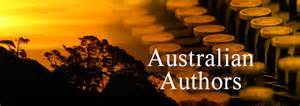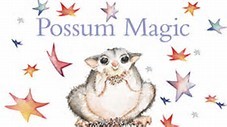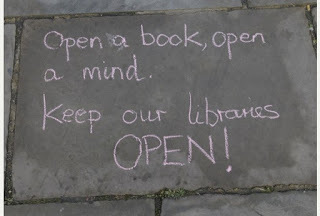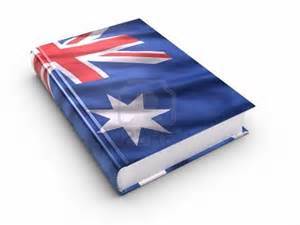Opening the library doors for a new age in Australian Picture Books
Australian children's books have always endeavored to capture the uniqueness of the Australian way of life. Books such as "Dot and the Kangaroo" (1899) by Ethel Pedley, "The Magic Pudding, the Adventures of Bunyip Bluegum" (1918) by Norman Lindsay, "Tales of Snugglepot and Cuddlepie" (1918) by May Gibbs, "Blinky Bill" (1933) by Dorothy Wall have played a huge part in establishing our national identity.

Australian picture books had their golden age in the 1970’s. Mem Fox's "Possum Magic" illustrated by multi award winning artist Julie Vivas, David Cox’s “Tin Lizzie” were the staples of school and home bookshelves. “Who Sank the Boat?” by Pamela Allen , “Diary of a Wombat” by Jackie French and Alison Lester’s and Margaret Wild’s fabulously simple and engaging stories were to follow, including a stream of Mem Fox classics.
 But what is next? These books are still best sellers but do they still represent our national identity? More than ever, publishers are no longer accepting un-solicited manuscripts and are doubtful of investing in unknown authors. Smaller independent publishers, when they are not being swallowed Pacman style by the bigger publishers, are doing their best to build a groundswell of new and exciting manuscripts, but they are often unable to get their books into the bookstores, who themselves are skeptical to take on unknown authors and are sticking to best selling, well known and mass produced books.Where does this leave the emerging Australian authors? Developing an online presence and learning to market yourself as an author and in turn your publications is now par for the course of becoming a successful writer. "Self Publishing’ is becoming less of a dirty word, as it becomes a viable avenue for getting your work out into the market, in the hope that a traditional publisher will ‘hear’ of you and consider your subsequent works. There is a lot more to becoming a successful Australian author than there was 40 years ago.We can take courage from the fact that emerging Australian picture books are some of the best quality in the world. We write with heart and a uniquely Australian voice. What we need is governments, bookstores and publishers to acknowledge and support the new voice of authors coming through to replace the old one that is curling around the edges. That is not at all to say the books written over three decades ago are not loved and timeless and they absolutely have a place in the hearts of modern children, because their parents loved them and parents pass onto their children the books they love. What I believe is the new generation of children must be given the opportunity to find their own 'timeless loves' from the new voice in Australian literature and the only way they can do that is if emerging authors are given a fair chance for their voice to be heard. This can't happen as long as we hold on with both hands to the past.
But what is next? These books are still best sellers but do they still represent our national identity? More than ever, publishers are no longer accepting un-solicited manuscripts and are doubtful of investing in unknown authors. Smaller independent publishers, when they are not being swallowed Pacman style by the bigger publishers, are doing their best to build a groundswell of new and exciting manuscripts, but they are often unable to get their books into the bookstores, who themselves are skeptical to take on unknown authors and are sticking to best selling, well known and mass produced books.Where does this leave the emerging Australian authors? Developing an online presence and learning to market yourself as an author and in turn your publications is now par for the course of becoming a successful writer. "Self Publishing’ is becoming less of a dirty word, as it becomes a viable avenue for getting your work out into the market, in the hope that a traditional publisher will ‘hear’ of you and consider your subsequent works. There is a lot more to becoming a successful Australian author than there was 40 years ago.We can take courage from the fact that emerging Australian picture books are some of the best quality in the world. We write with heart and a uniquely Australian voice. What we need is governments, bookstores and publishers to acknowledge and support the new voice of authors coming through to replace the old one that is curling around the edges. That is not at all to say the books written over three decades ago are not loved and timeless and they absolutely have a place in the hearts of modern children, because their parents loved them and parents pass onto their children the books they love. What I believe is the new generation of children must be given the opportunity to find their own 'timeless loves' from the new voice in Australian literature and the only way they can do that is if emerging authors are given a fair chance for their voice to be heard. This can't happen as long as we hold on with both hands to the past.

That is why teacher librarians are so important. They source books they feel have value and are open to discovering new talent from the local pool of authors. Teacher librarians have the unique opportunity to be impartial when it comes to introducing children to picture books, deciding on a curriculum based on content, not fame. As the government provide less and less funding for full time teacher librarians, when in some cases libraries are not even open the whole school week, this outlet for children to be exposed to new books and for them to make up their own mind about what and who they like is slowly disintegrating. It's a national disgrace.

If we all work together to have our voices heard, our time will come. Never give up hope that your book could be the next ‘Australian Classic.”
Talk soon
x Michelle
www.michelleworthington.com

Australian picture books had their golden age in the 1970’s. Mem Fox's "Possum Magic" illustrated by multi award winning artist Julie Vivas, David Cox’s “Tin Lizzie” were the staples of school and home bookshelves. “Who Sank the Boat?” by Pamela Allen , “Diary of a Wombat” by Jackie French and Alison Lester’s and Margaret Wild’s fabulously simple and engaging stories were to follow, including a stream of Mem Fox classics.
 But what is next? These books are still best sellers but do they still represent our national identity? More than ever, publishers are no longer accepting un-solicited manuscripts and are doubtful of investing in unknown authors. Smaller independent publishers, when they are not being swallowed Pacman style by the bigger publishers, are doing their best to build a groundswell of new and exciting manuscripts, but they are often unable to get their books into the bookstores, who themselves are skeptical to take on unknown authors and are sticking to best selling, well known and mass produced books.Where does this leave the emerging Australian authors? Developing an online presence and learning to market yourself as an author and in turn your publications is now par for the course of becoming a successful writer. "Self Publishing’ is becoming less of a dirty word, as it becomes a viable avenue for getting your work out into the market, in the hope that a traditional publisher will ‘hear’ of you and consider your subsequent works. There is a lot more to becoming a successful Australian author than there was 40 years ago.We can take courage from the fact that emerging Australian picture books are some of the best quality in the world. We write with heart and a uniquely Australian voice. What we need is governments, bookstores and publishers to acknowledge and support the new voice of authors coming through to replace the old one that is curling around the edges. That is not at all to say the books written over three decades ago are not loved and timeless and they absolutely have a place in the hearts of modern children, because their parents loved them and parents pass onto their children the books they love. What I believe is the new generation of children must be given the opportunity to find their own 'timeless loves' from the new voice in Australian literature and the only way they can do that is if emerging authors are given a fair chance for their voice to be heard. This can't happen as long as we hold on with both hands to the past.
But what is next? These books are still best sellers but do they still represent our national identity? More than ever, publishers are no longer accepting un-solicited manuscripts and are doubtful of investing in unknown authors. Smaller independent publishers, when they are not being swallowed Pacman style by the bigger publishers, are doing their best to build a groundswell of new and exciting manuscripts, but they are often unable to get their books into the bookstores, who themselves are skeptical to take on unknown authors and are sticking to best selling, well known and mass produced books.Where does this leave the emerging Australian authors? Developing an online presence and learning to market yourself as an author and in turn your publications is now par for the course of becoming a successful writer. "Self Publishing’ is becoming less of a dirty word, as it becomes a viable avenue for getting your work out into the market, in the hope that a traditional publisher will ‘hear’ of you and consider your subsequent works. There is a lot more to becoming a successful Australian author than there was 40 years ago.We can take courage from the fact that emerging Australian picture books are some of the best quality in the world. We write with heart and a uniquely Australian voice. What we need is governments, bookstores and publishers to acknowledge and support the new voice of authors coming through to replace the old one that is curling around the edges. That is not at all to say the books written over three decades ago are not loved and timeless and they absolutely have a place in the hearts of modern children, because their parents loved them and parents pass onto their children the books they love. What I believe is the new generation of children must be given the opportunity to find their own 'timeless loves' from the new voice in Australian literature and the only way they can do that is if emerging authors are given a fair chance for their voice to be heard. This can't happen as long as we hold on with both hands to the past. 
That is why teacher librarians are so important. They source books they feel have value and are open to discovering new talent from the local pool of authors. Teacher librarians have the unique opportunity to be impartial when it comes to introducing children to picture books, deciding on a curriculum based on content, not fame. As the government provide less and less funding for full time teacher librarians, when in some cases libraries are not even open the whole school week, this outlet for children to be exposed to new books and for them to make up their own mind about what and who they like is slowly disintegrating. It's a national disgrace.

If we all work together to have our voices heard, our time will come. Never give up hope that your book could be the next ‘Australian Classic.”
Talk soon
x Michelle
www.michelleworthington.com
Published on October 11, 2015 15:00
No comments have been added yet.



